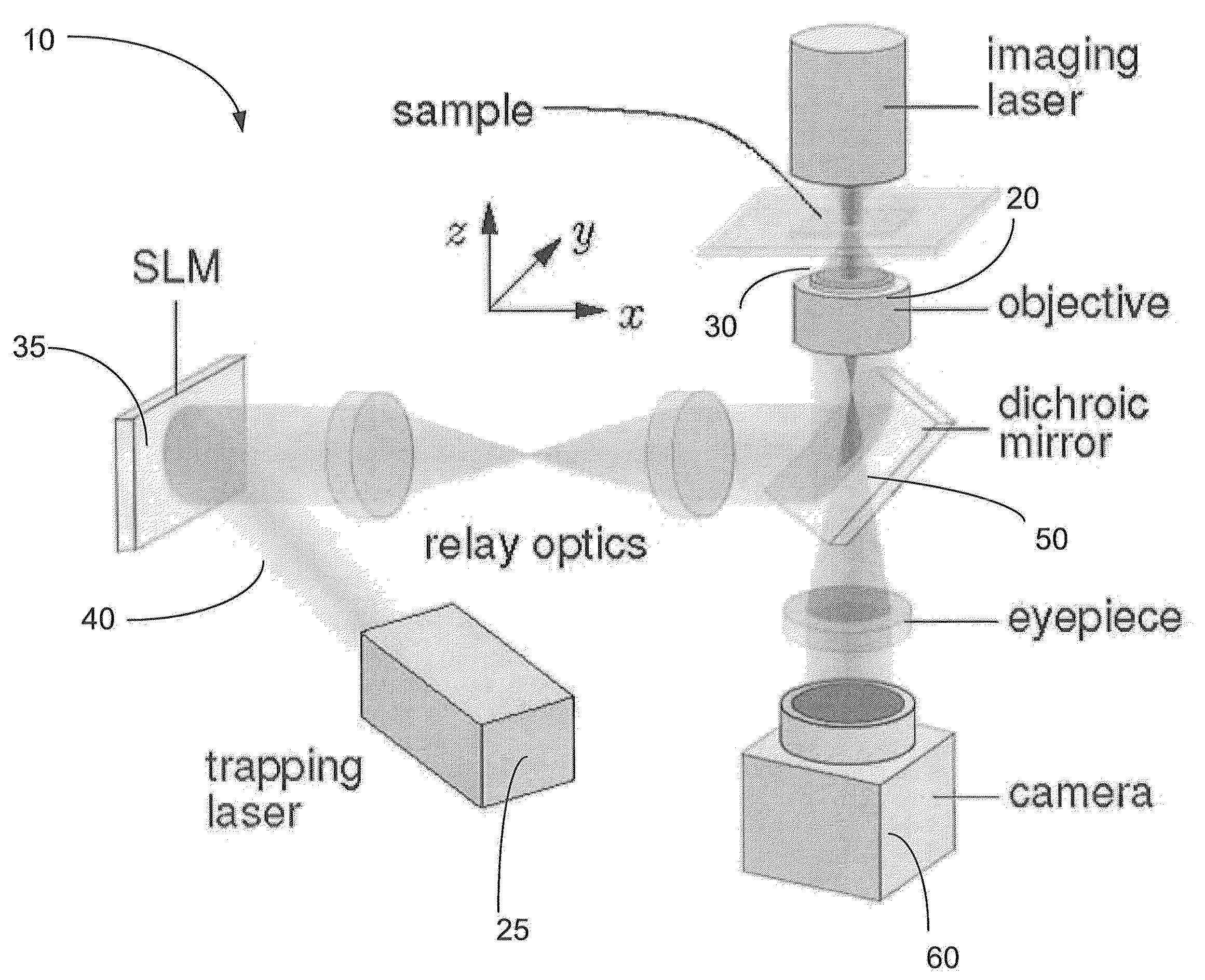Holographic microscopy of holographically trapped three-dimensional structures
a three-dimensional structure and holographic microscopy technology, applied in the field of holographic microscopy of holographically trapped three-dimensional structures, can solve the problems of reducing imaging speed, adding substantial complexity, and no complementary method in the prior art for examining optically trapped structures
- Summary
- Abstract
- Description
- Claims
- Application Information
AI Technical Summary
Benefits of technology
Problems solved by technology
Method used
Image
Examples
Embodiment Construction
[0011]FIG. 1 shows a schematic representation of an integrated system 10 constructed in accordance with the invention. The system 10 is based on an inverted optical microscope (such as, Zeiss Axiovert S100-TV) outfitted with a 100× NA 1.4 oil immersion objective lens 20. This lens 20 is used both to project holographic optical traps, and also to collect in-line holographic images of trapped objects. Holographic traps are preferably powered by a frequency-doubled diode-pumped solid state laser 25 (such as, a Coherent Verdi) operating at a wavelength of 532 nm to generate input laser beam 30. A liquid crystal spatial light modulator 35 (such as a Hamamatsu PAL-SLM X7550) imprints the beam's wavefronts with phase-only holograms encoding the desired trapping pattern. The modified trapping beam 40 then is relayed to the input pupil of the objective lens 20 and is focused into optical traps.
[0012]The trapping beam 40 is preferably relayed to the objective lens 20 with a dichroic mirror 50...
PUM
 Login to View More
Login to View More Abstract
Description
Claims
Application Information
 Login to View More
Login to View More - R&D
- Intellectual Property
- Life Sciences
- Materials
- Tech Scout
- Unparalleled Data Quality
- Higher Quality Content
- 60% Fewer Hallucinations
Browse by: Latest US Patents, China's latest patents, Technical Efficacy Thesaurus, Application Domain, Technology Topic, Popular Technical Reports.
© 2025 PatSnap. All rights reserved.Legal|Privacy policy|Modern Slavery Act Transparency Statement|Sitemap|About US| Contact US: help@patsnap.com



